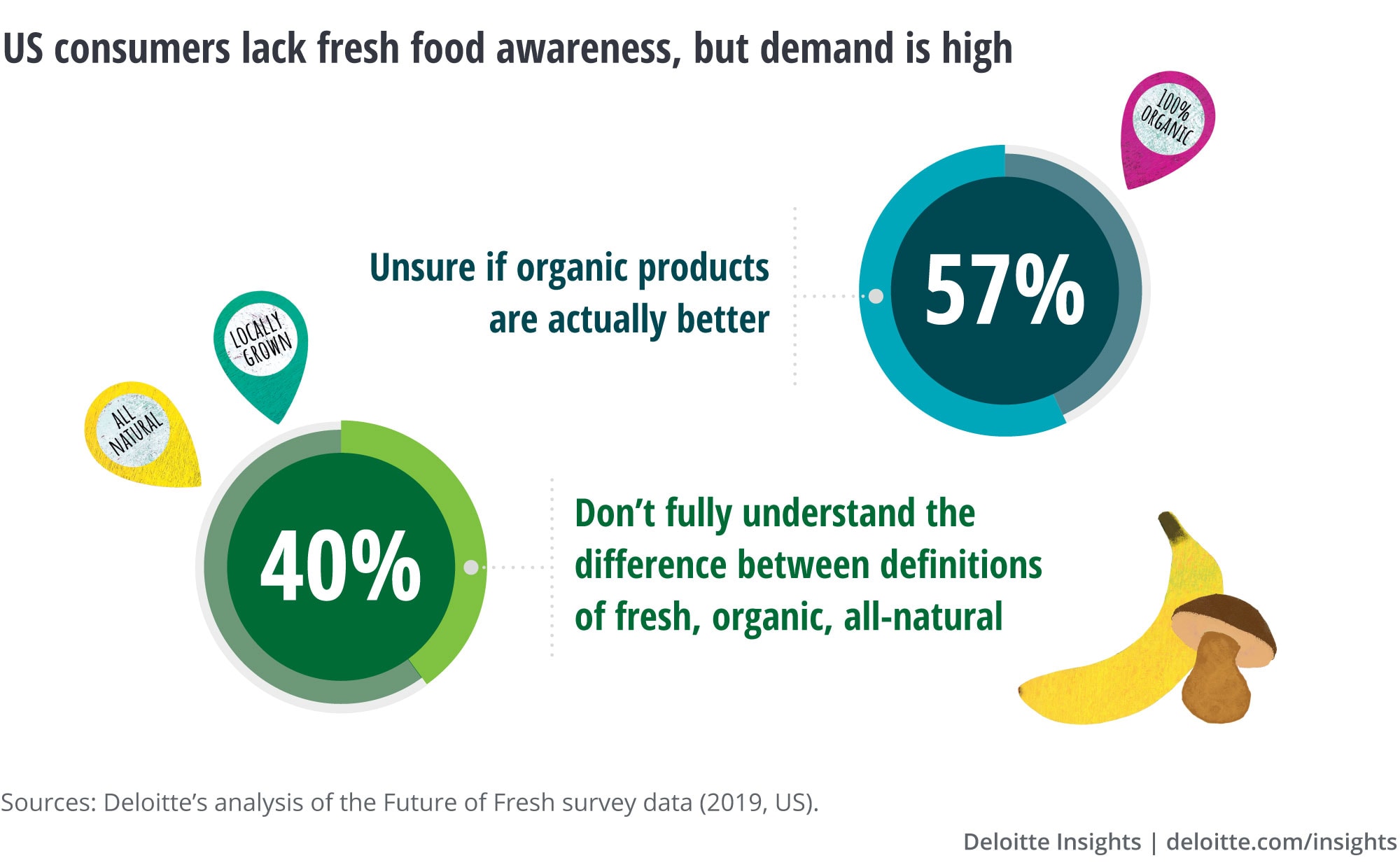
Advancing the fresh campaign The future of fresh
3 minute read
10 April 2020
 Brian Baker United States
Brian Baker United States Curt Fedder United States
Curt Fedder United States Nithya Swaminathan United States
Nithya Swaminathan United States Jagadish Upadhyaya India
Jagadish Upadhyaya India
Technology can help prompt consumers toward fresh food options.
Consumer interest in healthier food options is on the rise. As many as 80 percent of fresh food consumers actively seek healthier versions of the foods they purchase.1 And 31 percent of consumers have higher purchase intent within fresh foods, are highly committed to health and wellness, and are eager to experiment with fresh options. We call these consumers “Fresh Forwards.”2 We’re curious how fresh food companies can:
- Attract new shoppers into the “Fresh Forwards” segment and retain them
- Provide consumers with appropriate information to help them make healthy decisions at time of purchase

Learn more
Explore the retail & consumer products collection
Read more about the Future of Fresh
Learn about Deloitte’s services
Go straight to smart. Get the Deloitte Insights app.
Common food labeling terms—such as natural, organic, 100% organic, and conventional—are not only confusing and vague but deciphering them is a burden that falls squarely on the convenience-seeking consumer. More than a third of our consumers surveyed said that they don’t fully understand the difference between the different food descriptions listed above. However, we know from our research that 80 percent of consumers actively seek out healthier food and beverage options, while 77 percent avoid preservatives and other chemicals in the food they buy. With clear purchasing intent for healthy food options, what can companies do to further the fresh agenda?
Fresh needs a face-lift
Does an apple a day keep the doctor away? Not particularly,3 but the adage has certainly helped promote apple consumption and, in general, healthy food choices. With access to modern communication channels and advancements in nutrition and food science, today’s marketers have the opportunity to shape a healthier society with more positive eating habits.
Packaging and labels continue to be an effective way to communicate nutrition facts and encourage healthier food choices. For example, a recent study found labeling reduced consumers’ intake of total fat by 10.6 percent, calories by 6.6 percent, and other unhealthy food options by 13 percent. At the same time, labeling helped increase vegetable consumption by 13.5 percent.4
However, with packaging real estate at a premium, companies and food producers are searching for creative new ways to provide information about their products. Recently, a produce supplier began leveraging QR codes on packaging to provide consumers with a wealth of product information, such as where and how the product was cultivated, harvested, and packed.5 In addition, many leading food retailers in the United States are using blockchain technology to provide end-to-end traceability of their fresh and leafy green suppliers. 6
Mobile apps and social media platforms are becoming increasingly important tools for sharing educational and inspiring content to consumers. Our study revealed that half of all fresh food users are willing to use a smartphone app to inform in-store decision-making.7 While nearly all industry executives (97 percent or more) believe in providing detailed information on a variety of fresh food topics (organic farming, sustainability, and food waste), 78 percent cited long lead times as a critical factor impairing their decision to implement new technology.8
Shopping today is the most convenient it has ever been for consumers.9 With technology becoming the medium of influence across all aspects of a customer’s journey, manufacturers’ ability to serve the right content, through the right channel and at the right time, can truly help further the growth potential of fresh foods.
Common food labeling terms are not only confusing and vague but deciphering them is a burden that falls squarely on the convenience-seeking consumer.
To learn more about fresh foods, please see our recent study, The future of fresh: Strategies to realize value in the fresh food category.
To learn more about advanced technologies in the consumer products sector, please see our recent series, The adoption of disruptive technologies in consumer products industry.
© 2021. See Terms of Use for more information.
Explore the Future of Fresh
-
The future of fresh Collection
-
The future of fresh Article5 years ago
-
In an uncertain economy, does fresh produce spoil revenue growth? Article5 years ago
-
Retail distribution Collection









